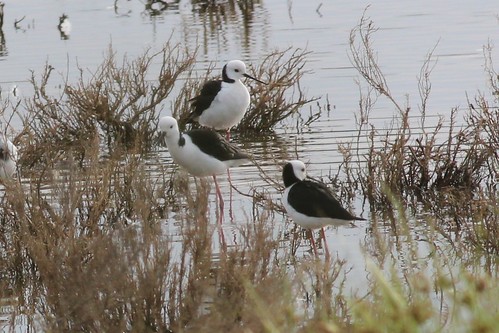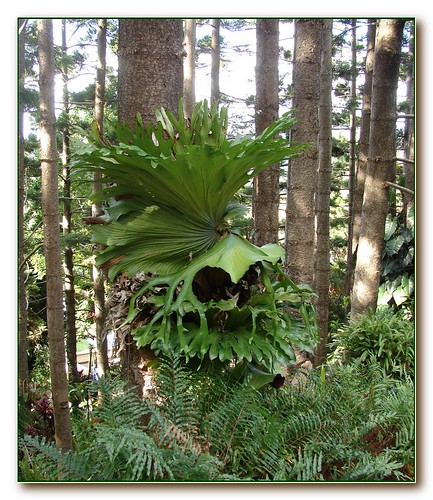Wildlife in Focus
Black Winged Stilt

If ever there was a bird that would make a great porcelain figuring, it has to be this one. The Black Winged Stilt is super elegant, handsome and beautifully coloured.
Let’s find out more… with ecologist Sue Stevens
This bird is a wader, meaning it’s standing not swimming when it feeds, as distinct from ducks. They use their sharp bills to peck.
If you’ve seen aquatic birds and wondered what they’re eating- only very small food such as molluscs, miniscule crustaceans, algae, flies and aquatic insects.
DID YOU KNOW?
In order to keep predators away from their unhatched eggs, a Black-winged Stilt pretends to be injured so it can lure the predator away.
The stilt can also make a sharp yapping sound and fly around frantically to distract any predators.
Unless you have a nearby wetland you probably won’t see this bird, but in the holiday season, you may just well come across it in your travels.
We would love to see your photo of this bird. Send it in to
realworldgardener@gmail.com or write in to 2RRR po Box 644 Gladesville NSW 1675
Vegetable Heroes
 This
weeks Vegetable Hero segment is actually a fruit tree-the Davidson’s Plum, an important food tree in Australia’s
bush food industry.
This
weeks Vegetable Hero segment is actually a fruit tree-the Davidson’s Plum, an important food tree in Australia’s
bush food industry.There are three Davidson’s plum in the genus that are native to Australia.
Davidsonia pruriens, is a tall slimline tree that grows to 10 metres and is from Queensland in the understorey of rainforests.
The plums off this tree hang of the branches as well as the trunk.
The flowers also have that amazing habit of growing straight off the trunk as well.
The fruits are larger than Davidsonia jerseyana also known as , Davidson's Plum or Mullumbimby Plum,
This one is also a slimline tree, only around 5 metres tall, and native to lowland subtropical rainforests of New South Wales. It is considered an endangered species in the wild, but is grown for its pleasantly sour fruit that is used in jam, wine, ice-cream and sauces.
The last in the three is Davidsonia johnsonii, known as Smooth Davidson's Plum.
Also a small tree with a spreading canopy, and smooth leaves native to New South Wales and southeast Queensland. It is also considered an endangered species in the wild, but is not grown very much.
Today, we’re concentrating on the taller of the Davidson plums-Davidsonia pruriens.
Mainly because I grow it and also because the Mullumbimby plum prefers warmer conditions.
This tree is suitable for any tropical area, but also warm temperate and further south, Mediterranean climates such as lower part of Victoria, including Melbourne, and of course, around Adelaide.
For cool temperate districts you can grow this tree in a pot indoors for quite a few years because of its slow growth.
Davidson’s plum' is a beautiful palm shaped tree with what’s called pinnate leaves that have fine hairy stems underneath.
Pinnate means that the leaves don’t come of branches but rather from a thicker central stem, from which five, seven or more leaves come off.
New growth is an attractive dusky pink, as are the panicles of flowers that appear in Spring.
In Autumn the plum fruits appear.
Plums hang of the tree in clusters and are quite large, dark blue to black about 4-5cm in diameter.
The plum looks like a blood plum inside and out.
Inside the dark red flesh there is two unusual flat seeds and has a really acidic plum flavour. The skin is thin but on the tougher, leathery side, and is covered with very fine hairs.
Because these trees are understory rainforest trees they can be grown in shady conditions but commercial growers do grow them in full sun.
This tree needs protection from wind until it’s established, and prefers moist, humus enriched well drained soil.
The online supplier suggests that they make a very attractive indoor plant when young.
If you would like to buy this tree you can, from two suppliers in Australia. Either call email or write for a catalogue.
The suppliers are in fact located close to Mullumbimby.
Computer users can put in Botanic Gardens nursery + www.daleysfruit.com.au and
+ http://www.nativerainforestplum.com/index.html
Fairly slow growing and prefer being in shaded locations.
I’ve made Davidson’s Plum jam, but you can also find recipes for Davidson’s plum paste and Davidson’s plum chutney.
You could also substitute Davidson’s plum for tamarind in satay sauce or when making sweet and sour sauce.
Design Elements
Redefining the Concept of a Produce Garden.Imagine the idea of plucking your own herbs and vegetables. No, you don't have to go to a far away place, but be right in your homes! More and more people are taking to redefining the idea of fresh greens and vegetables and shrinking the distance between the ingredients and the pan. Let’s find out how…
I hope that’s given you some idea start a produce garden or maybe redefine it so it works better for you.
Plant of the Week
- Planting too many strongly scented plants close together and all flowering at the same time would be overwhelming, so it is important to know when each plant will be in flower.
- Known as Madagascar Jasmine, once known as Stephanotis floribunda.
- Also known as Bridal wreath because the flower is often used in bridal bouquets.
- It is a vine native to Madagascar that is in the same family as milkweed, hoya and crown flower, the Asclepiadaceae.
- The genus name derives from the Greek stephanos, or crown, and otis, for ear, referring to the arrangement of the stamens in the flower, which are supposedly ear-shaped.
- The name was changed to Marsdenia in 1990.
- Drought tolerant and frost hardy. It’s sold as an indoor plant in places like Austria and Germany.
- The vines can grow to 3 6 metres or more and are covered with shiny, thick, dark green leaves. The leaves are opposite each other along the stem and are basically an elongated egg-shape and are 5-7 cm long.
- The stems often have long internodes (spaces between the leaves) but because the stems intertwine readily as they grow, the overall effect is one of dense foliage.
Marsdenia likes well-drained Acid, Alkaline or Neutral Loam, Chalk or Sand
- Suggested planting locations and garden types-City/Courtyard Gardens, Patio/Container Plants or Wall-side Borders
- Vigorous climbers -Timing: Those that flower on the previous year's growth should be pruned after flowering and where flowering occurs on the current year's growth prune in late winter or spring
- Pruning: No regular pruning needed. However trimming may be required to keep them to the space available, removing as much from the longer shoots as necessary.
- Pure white flowers appear in short clusters at the axils of the leaves.
- The flowers are very fragrant, tubular, waxy and 3-6 cm long long.
- The main flush of flowers starts in late winter or early spring and goes on into the summer in tropical climates, but late summer for temperate and cool temperate districts.
- If you live in sub-tropical areas, you’ll get a spattering of flowers on some vines all year long, though you’ll more like get no flowers for several months at a time in the winter months.
- Fruit on stephanotis vines appear fairly regularly in Australia and they look like a green mango but have an obvious seam running along two sides.
- When the fruit is ripe, in this case, changes colour from green to a fairly dark brown, the seed pops open along the seams and literally hundreds of flat, brown seeds attached to white tufts of hair about 1 cm long. These tufts act like parachutes and allow the wind to disperse the seeds.
- Very easily propagated from seed and in some cases, you’ll find the seed has sprouted somewhere else in your garden in the conditions are right-filtered sun, moist soil.
- Propagation-Propagate by seed sown at 18-21°C in spring or strike semi-hardwood cuttings in summer, with bottom heat
- Stephanotis needs to be grown on a support of some sort. The vines are heavy and need a strong fence or trellis.














